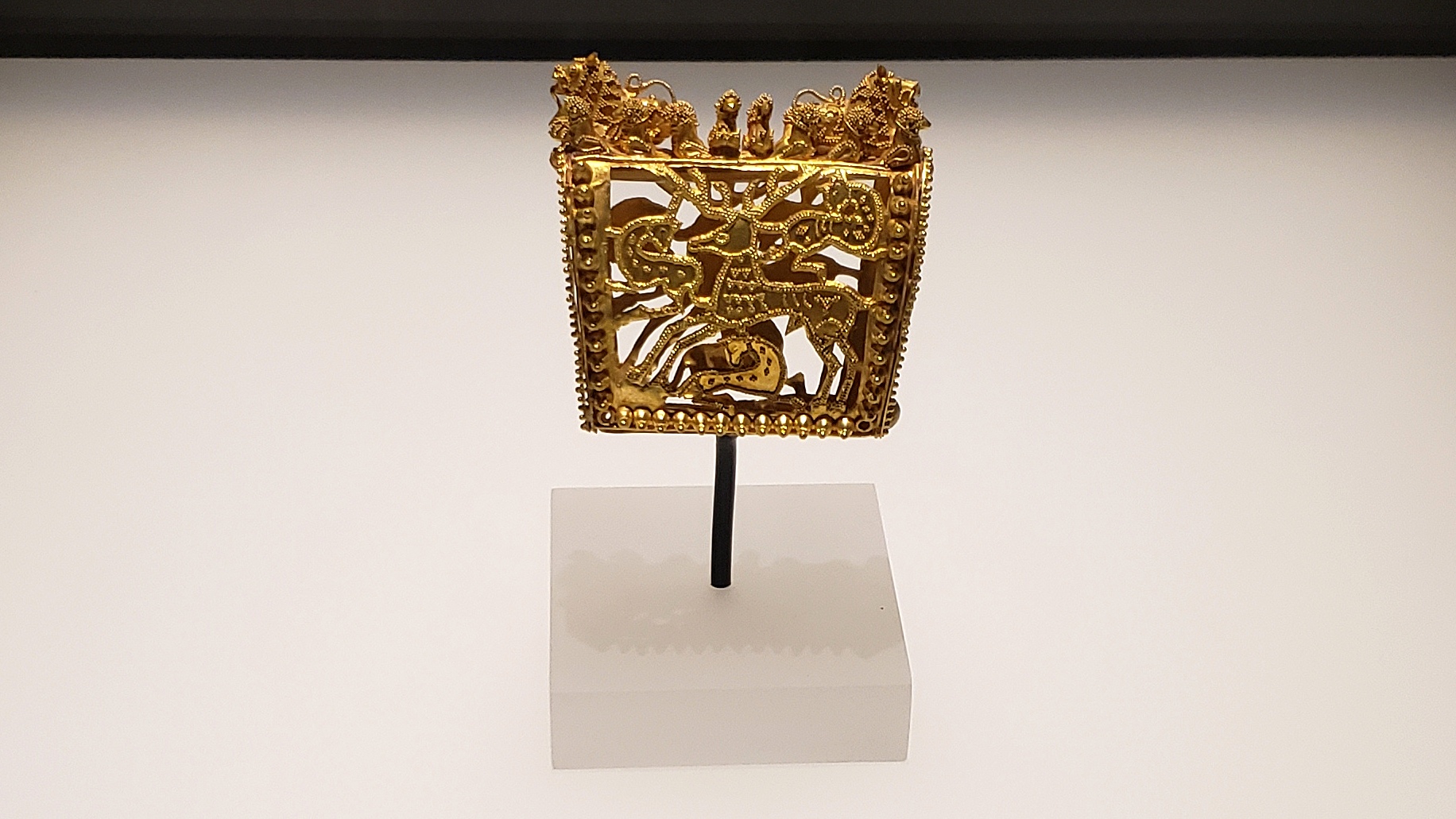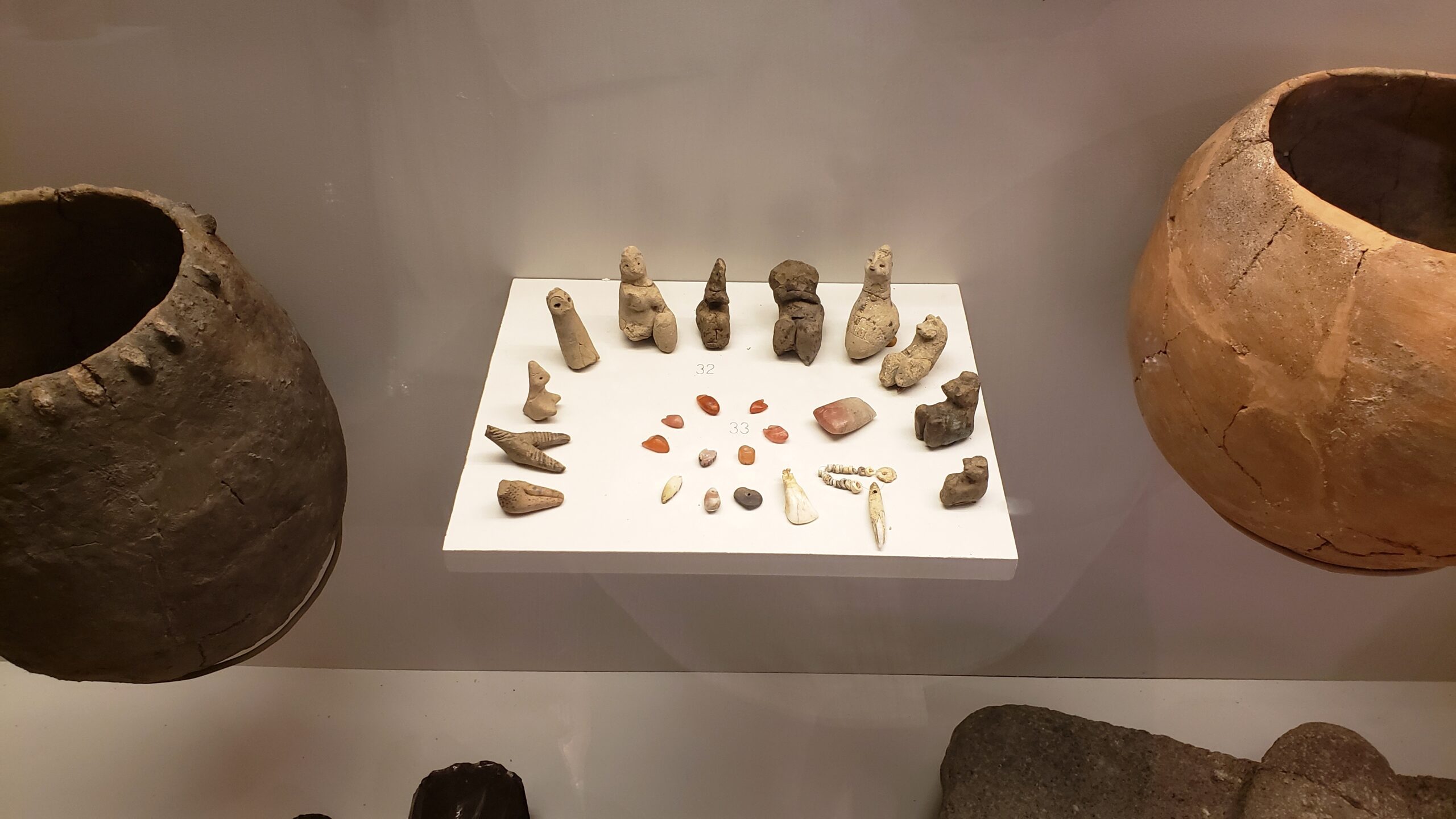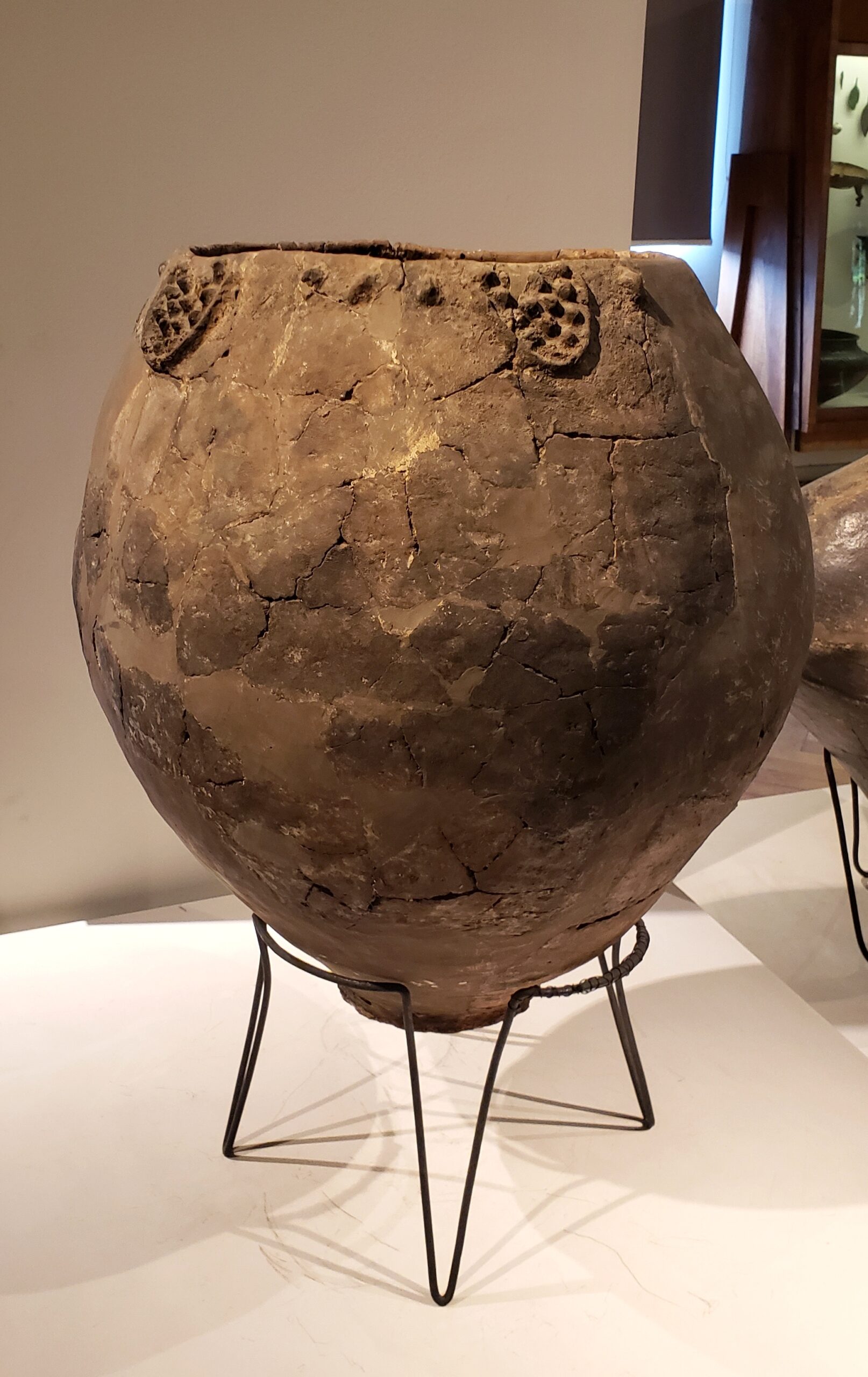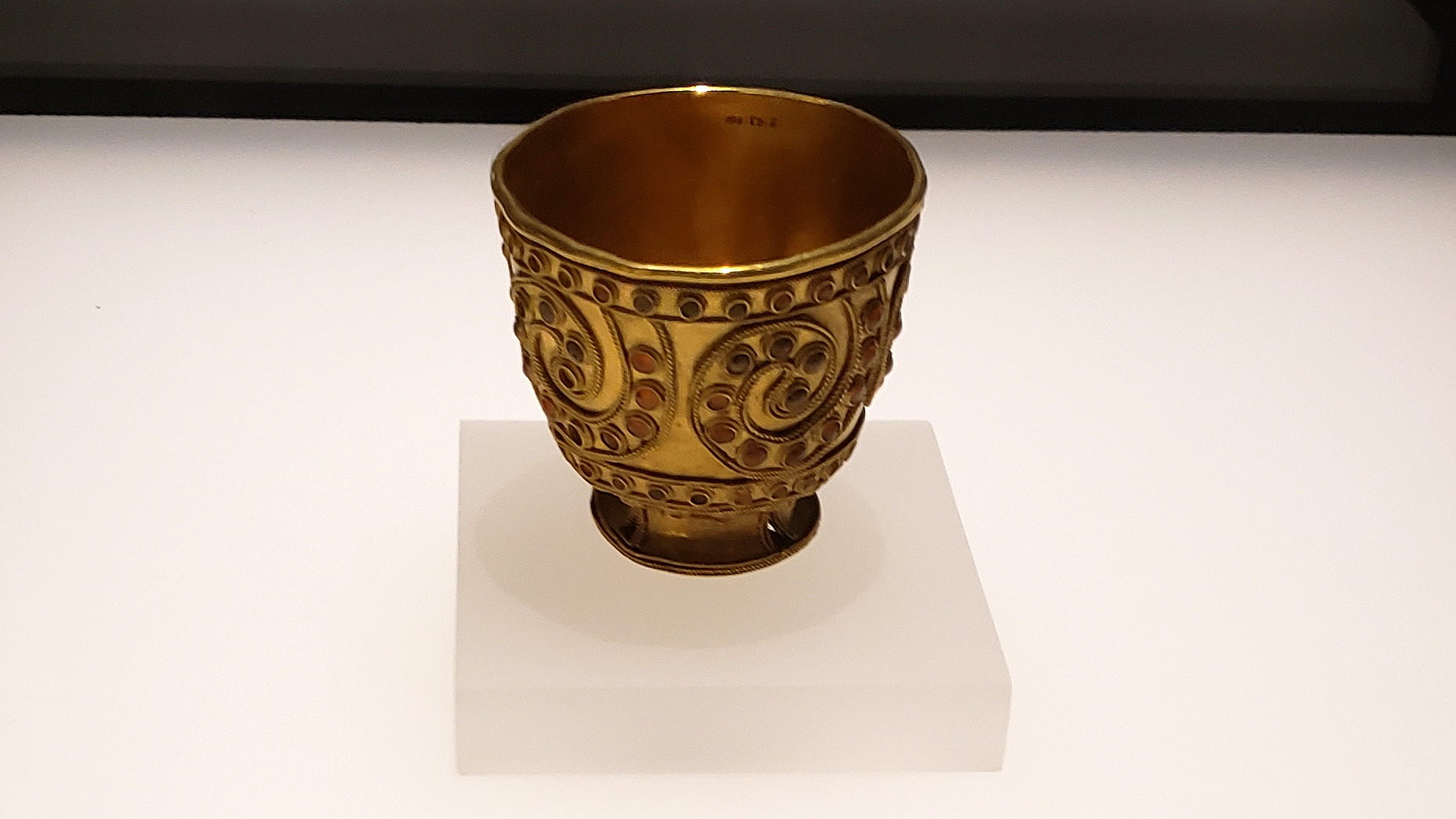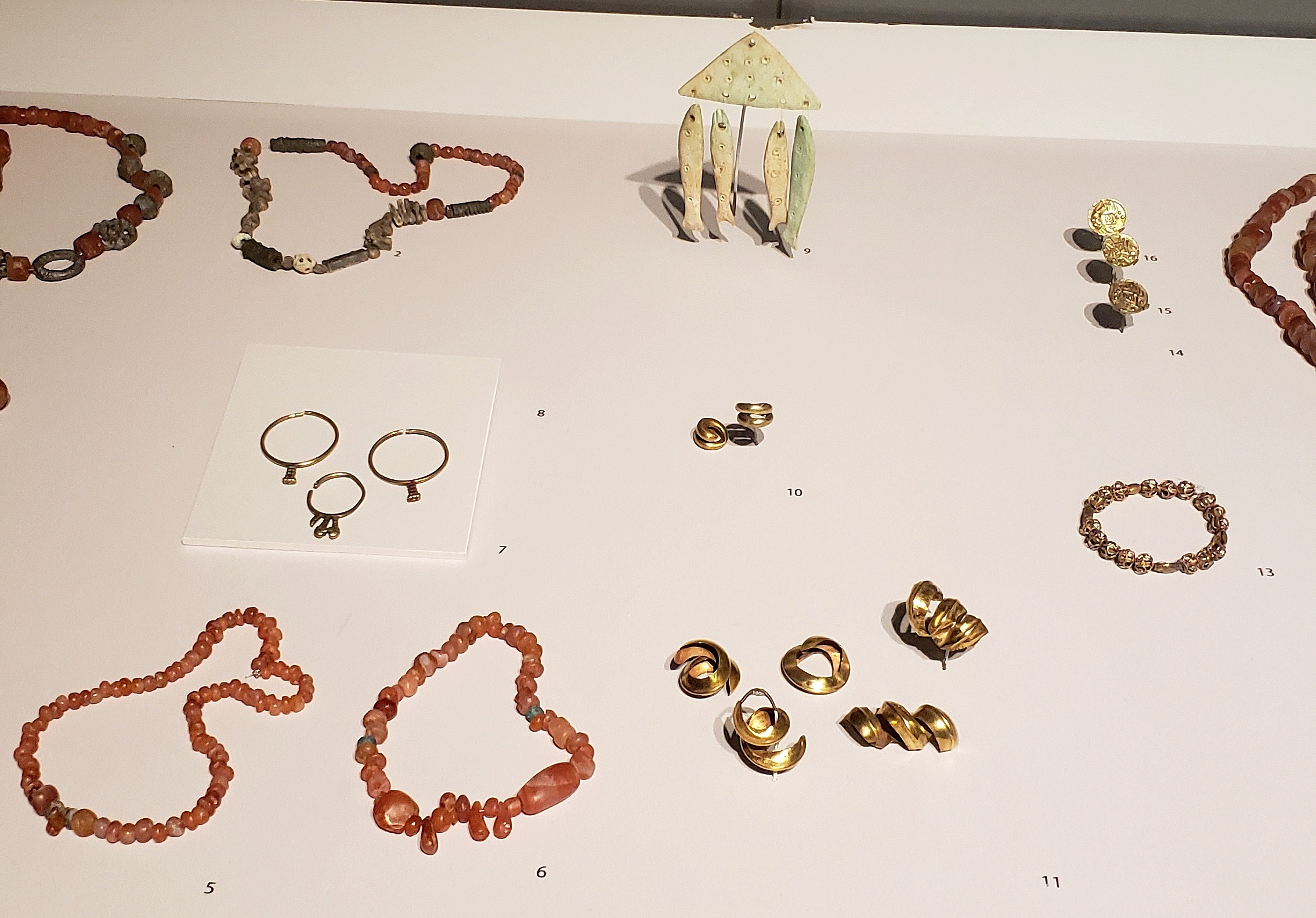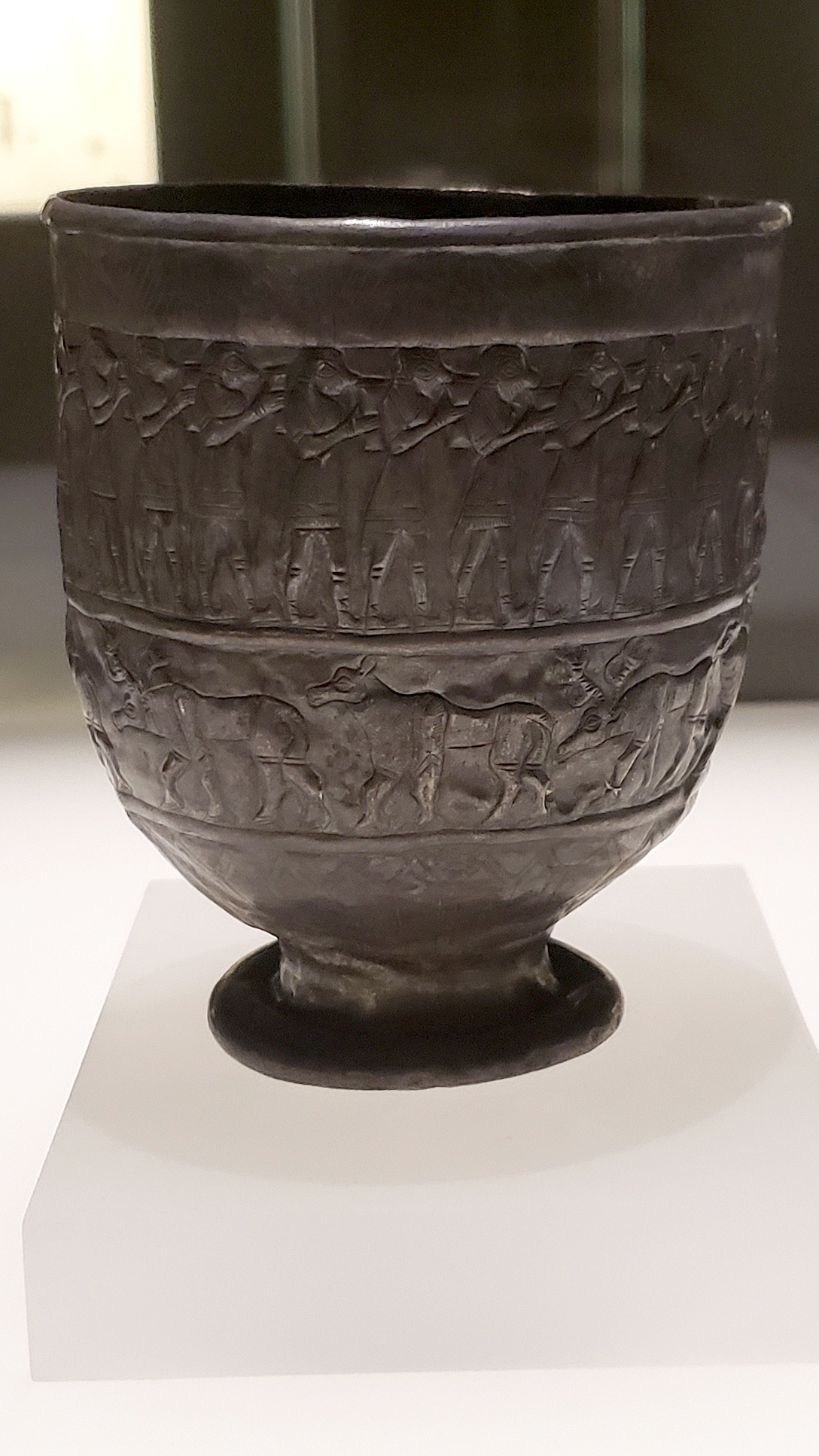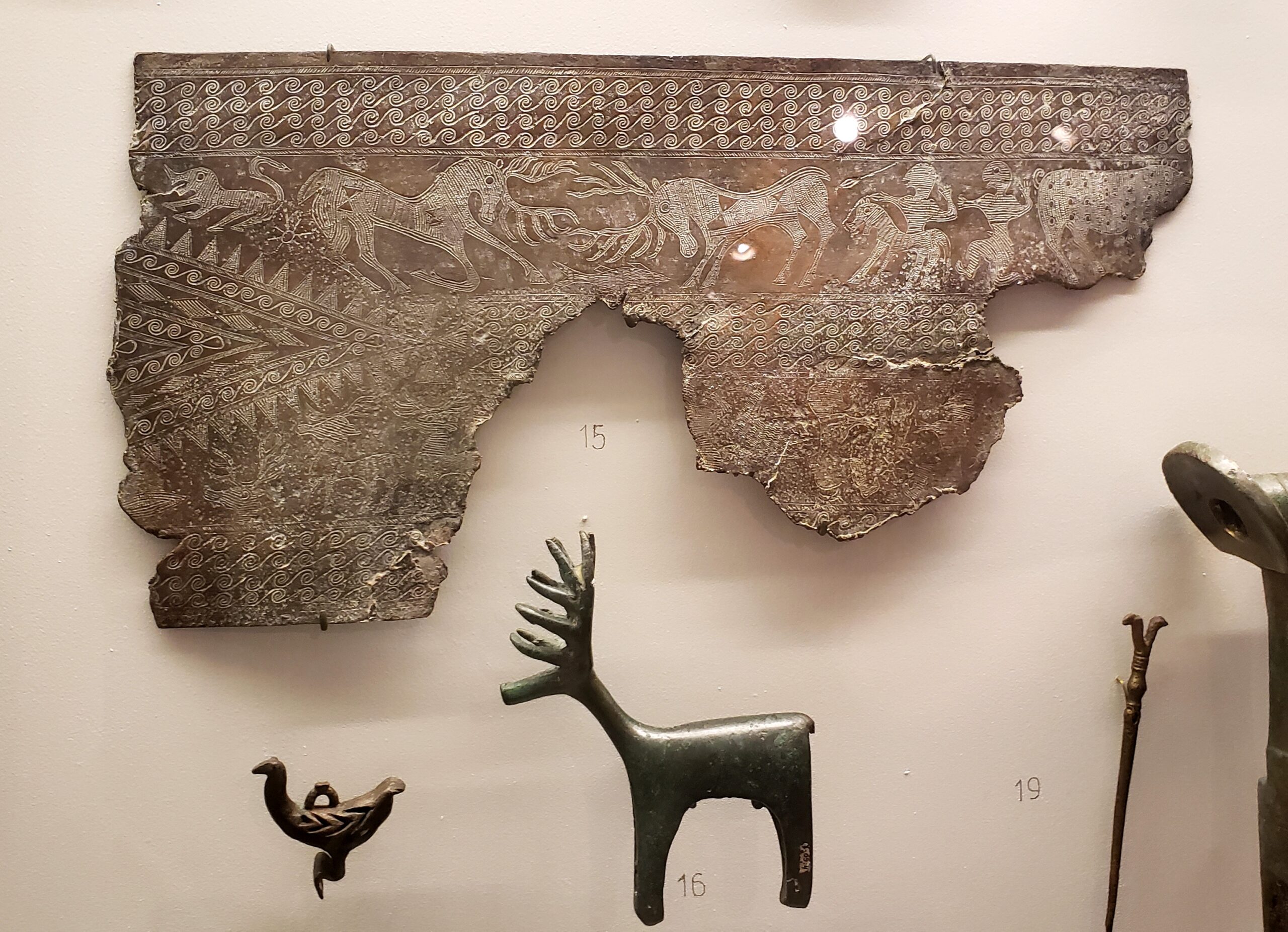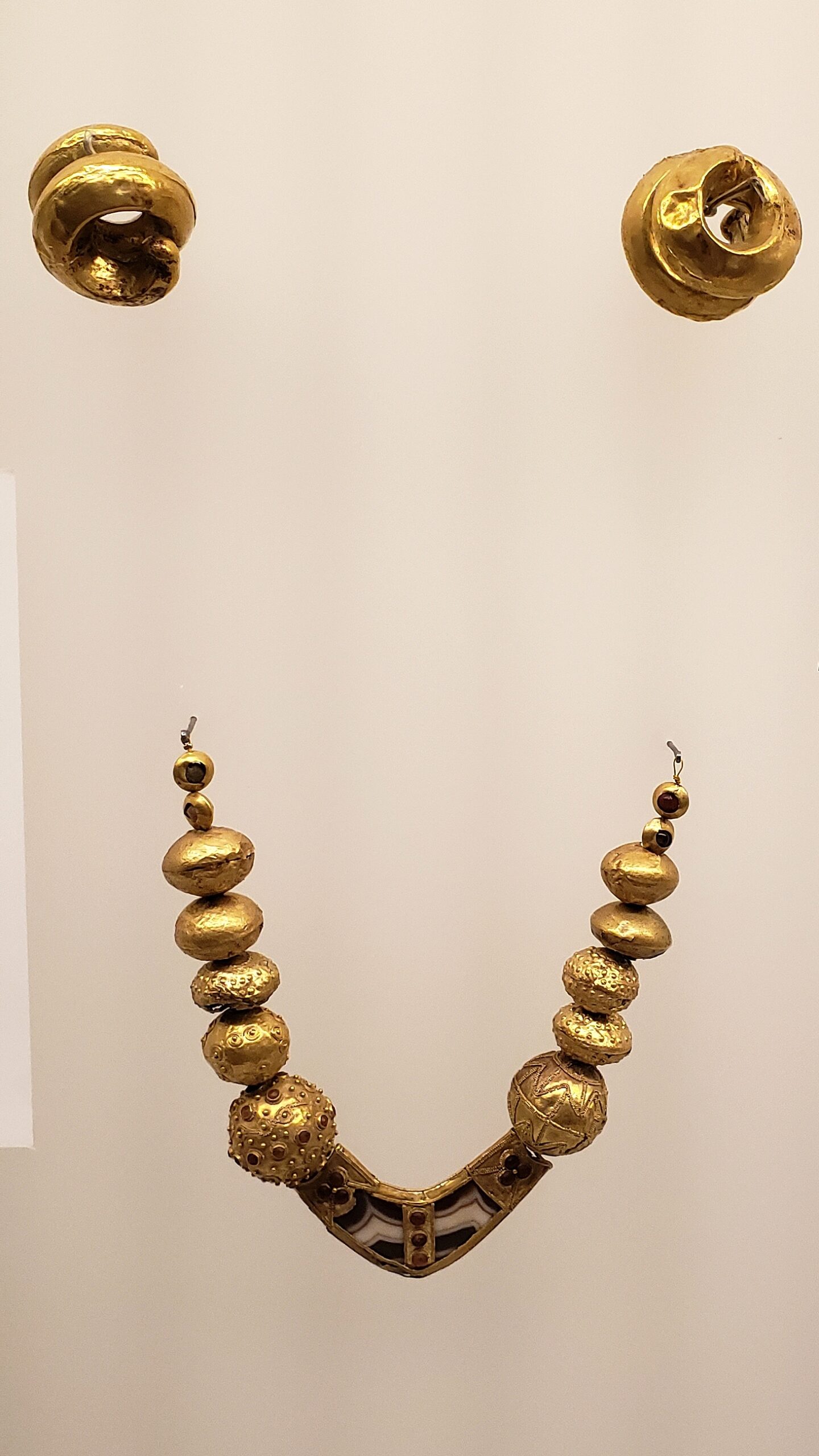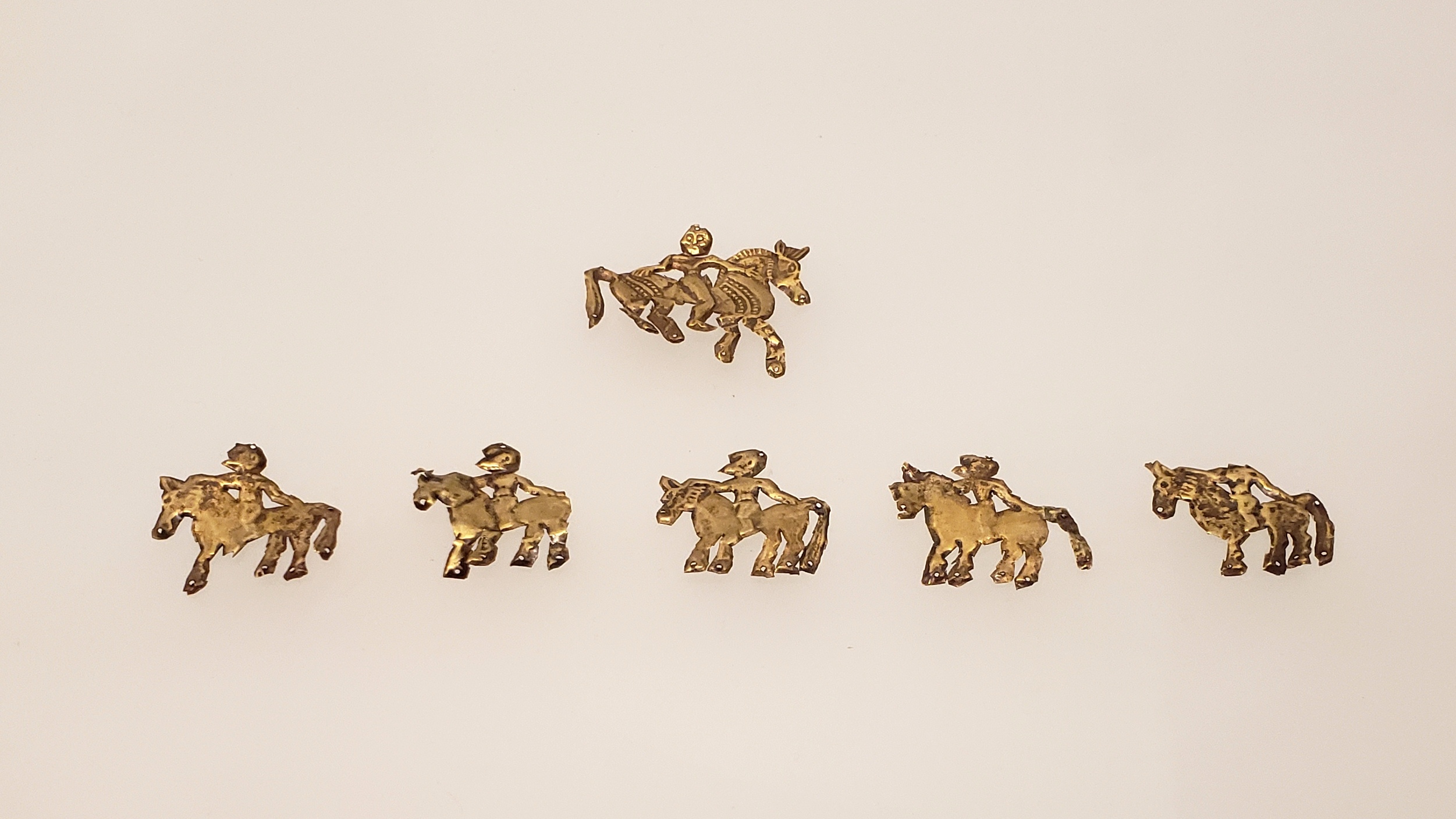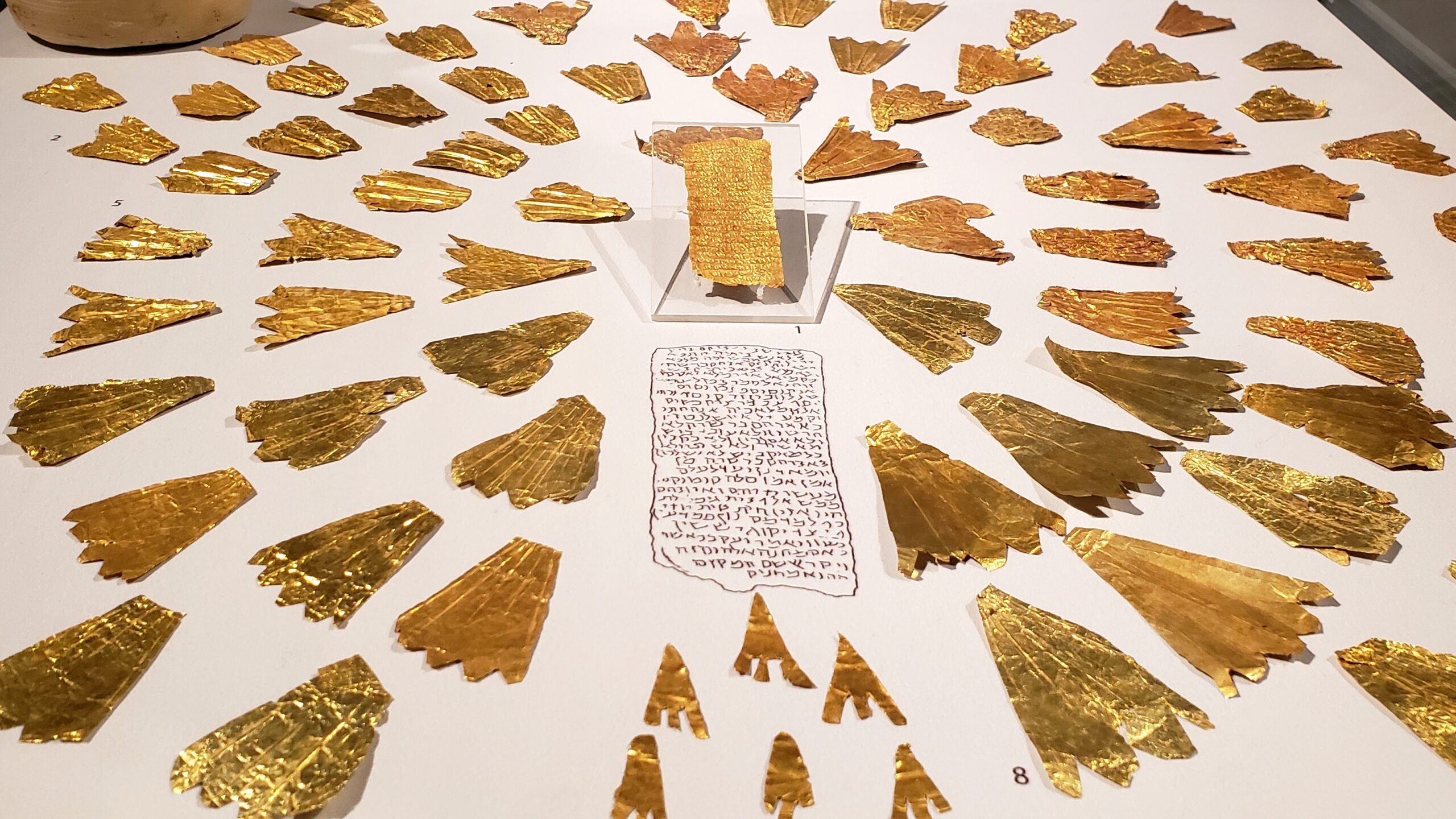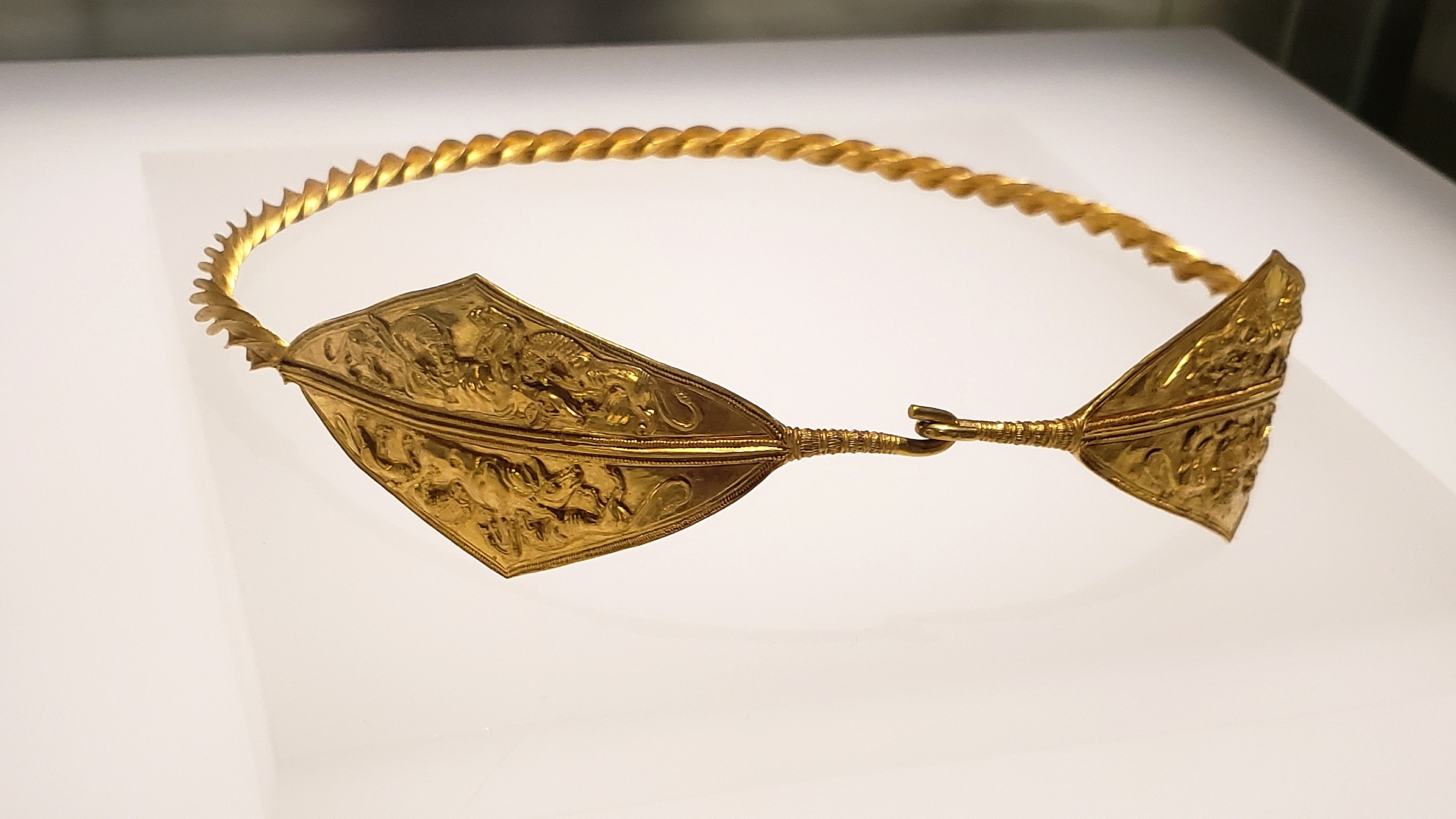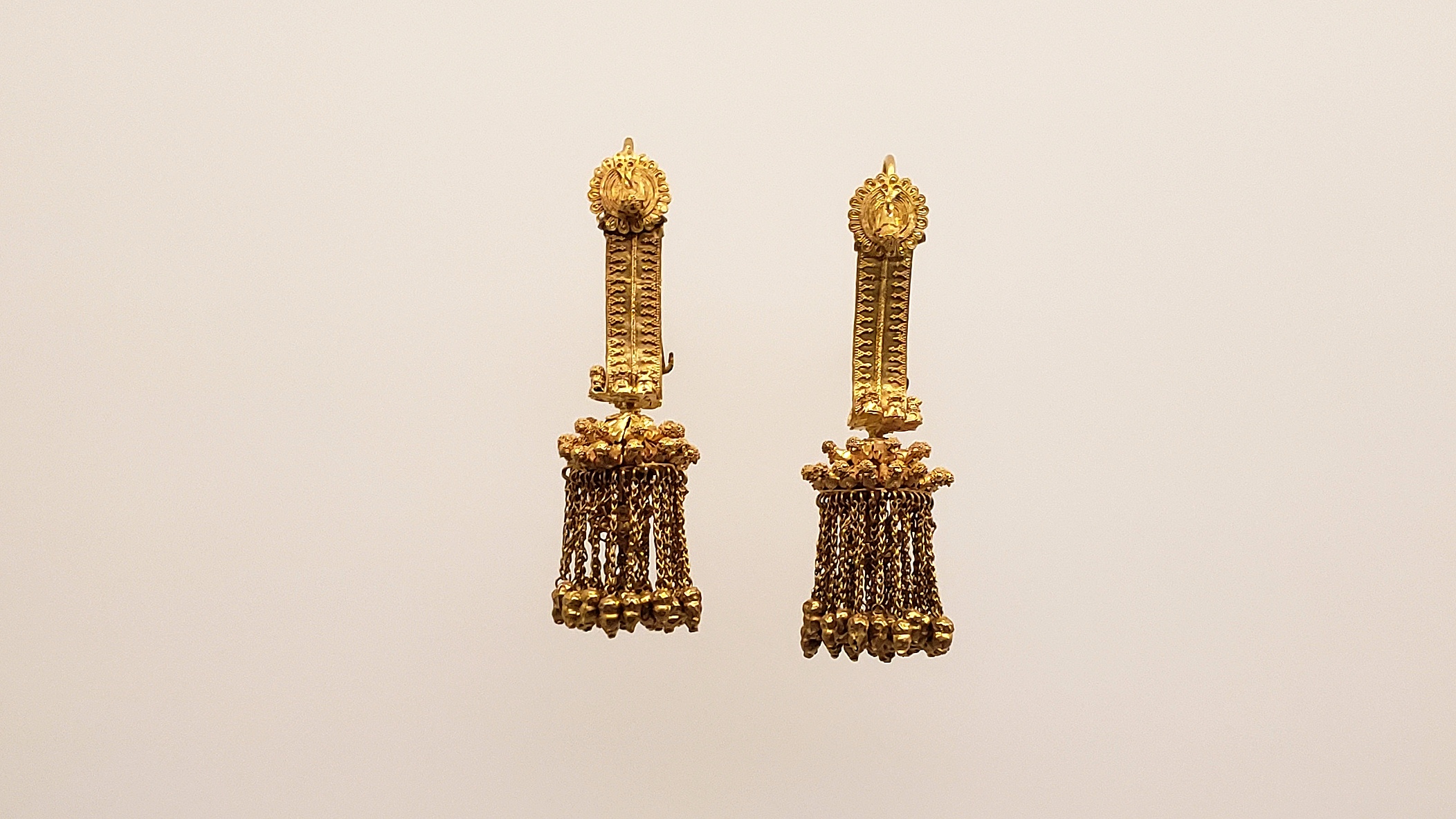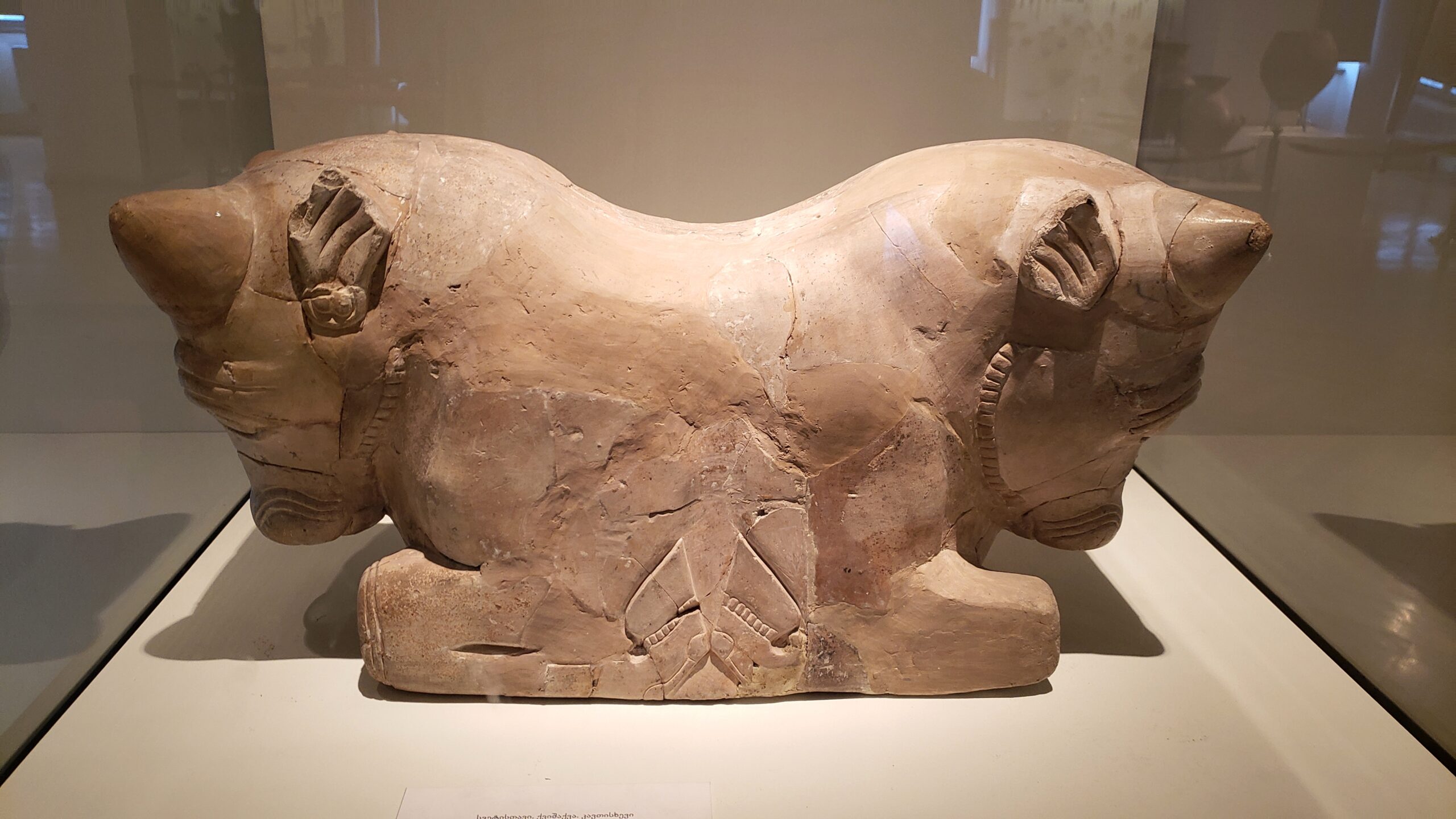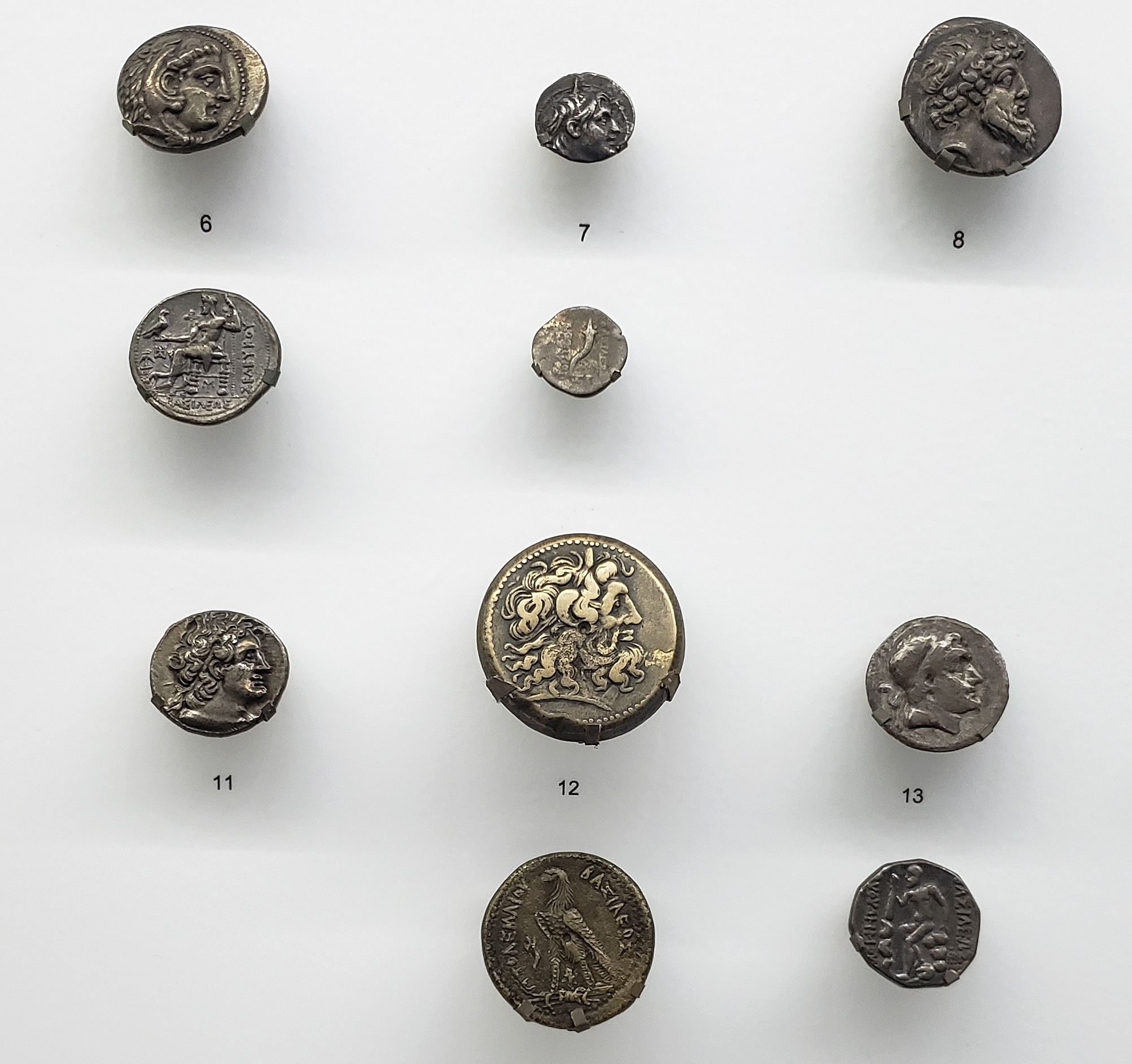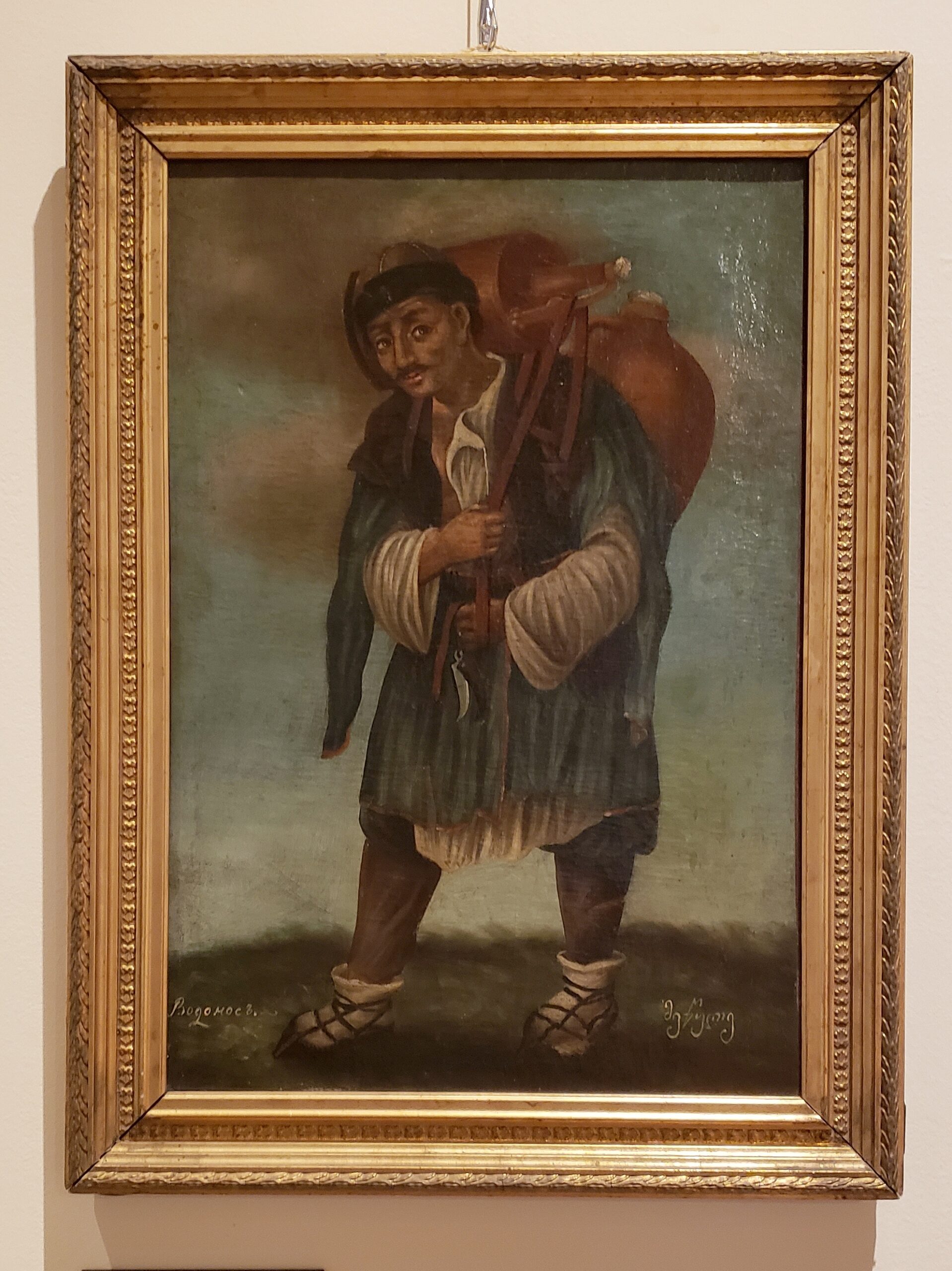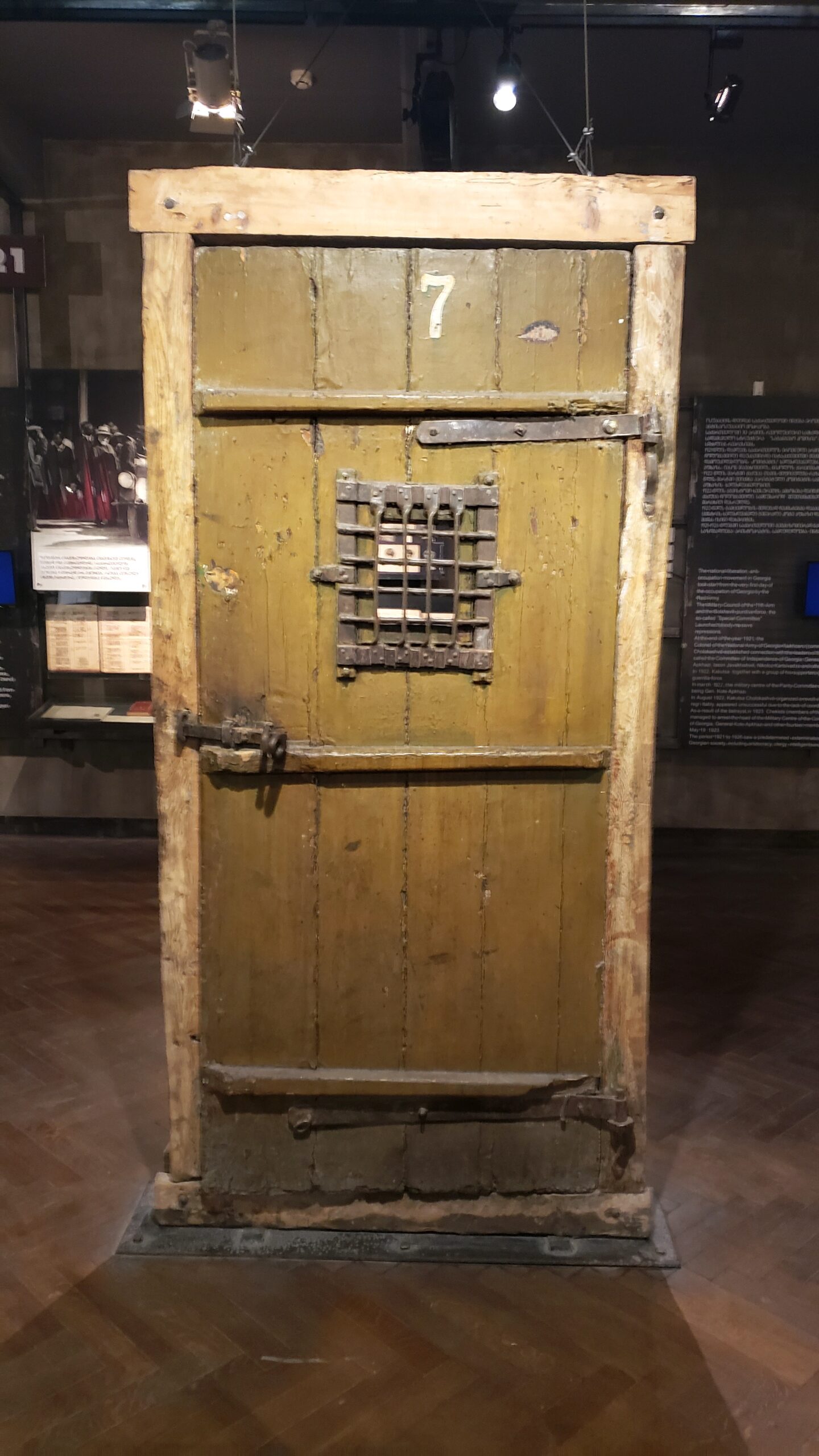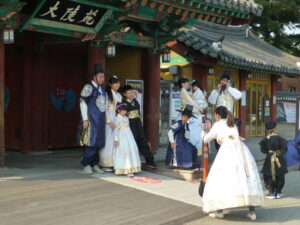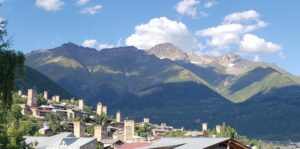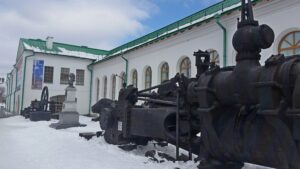The National Museum is renowned for its collection of gold and other fine metallurgic examples of Georgian culture back 10,000 years, especially during the great Colchis and Kartli eras from 800 BC to the 4th century AD. We were enthralled by the display, even though so many fine pieces had been lent to Krakow for an exhibit titled “The Golden Fleece” because Jason traveled to this land known for its splendid craft in gold.
There are plenty of items pre-dating the golden age of goldsmithing. Among the oldest pieces in the museum are these little clay figures of women from up to 10,000 years ago.
The proof is in the pot…this clay vessel for holding wine (as underscored by the grape-y decoration on the rim) was used over 7500 years ago in the 6th millennium BC.
As this is the oldest record of wine production in the world, Georgians claim to have originated wine-making. And it seems everyone today still has their own personal wine-making capability.
One of the great treasures of the collection from the 2nd millennium (around 1800) BC, a cup of two-walls made from a single sheet of gold on a lathe. The added spiral decoration contains stones of cornelian and lapis lazuli while amber and jet are underneath. (Trialeti burial grounds)
A collection spanning 1000 years, from the spiral gold pieces around 1700 BC to the hanging fish pendant of bone from around 350 BC.
From a single sheet of silver, this skillfully sculpted cup from the Trialeti burial grounds (around 1800 in the 2nd millennium BC) shows masked figures proceeding towards an altar on the upper ring while deer graze on the lower.
The engraving on this bronze belt from about 1000 BC shows plentiful deer, fish, and other animals being hunted – all enhanced by the wondrous patterning of spirals and hashes around them. The other figures on display date from the same Bronze Age period.
Between the 8th and 6th century BC comes this filigreed gold necklace with an agate centerpiece plus temple spirals which had little balls inside that tinkled while the lucky owner was moving.
From the Kazbegi Mountains during the 8th to 6th century BC come these charming plaques of horsemen that were attached to clothing.
Fragments of an amulet from the 5th century owned by a Jewish family, an example of the mixing of cultures in this crossroads between Asia and Europe. The tiny engraved text of the central small plate is in Hebrew. It affirms that the amulet belongs to the house of Abraham, son of Sara, and wards off evil.
To us, the peak of Colchian goldsmith’s art is captured by this headpiece with four charming deer in the square topped by two fierce lions. (4th century BC)
The spiraling band of this gold diadem nearly distracts from the artfully depicted attacks on an ibex and bull by lions on the triangular plates.
From the end of the 4th century BC shine these complex dangling attachments to a headband.
This two-headed bull in sandstone topped a pillar back in the 3rd century BC.
Coins from around 250 BC, including the stunning head of Ptolemy. The plentiful coinage underscores the wealth and trading importance of the Colchis kingdom.
The rest of the museum has very little to show from the onset of Christianity in the 4th century till the end of World War I. Perhaps other museums in town fill in the gap. One floor does include some charming portraits from the 19th century of Georgian villagers, like this one of a water carrier.
The door behind which Stalin himself was imprisoned as a revolutionary against the Tsar. This top floor in the museum reviews the sad history of Georgian independence, briefly heralded in 1918 as the Tsarist rule collapsed, but then suppressed violently through the 20s and 30s by the Soviet Union.
Ironically Stalin himself was born in Gori, Georgia, a few hours drive from Tbilisi and educated in the capital. After rising to power in the USSR, he had his henchmen imprison enemies of the state behind solid iron doors also on display – or kill them.
The country’s saga ends more happily in 1991 as the collapse of the USSR lets Georgia recover its own identity.
(To enlarge any picture above, click on it. Also, for more pictures from Georgia, CLICK HERE to view the slideshow at the end of the itinerary page.)


